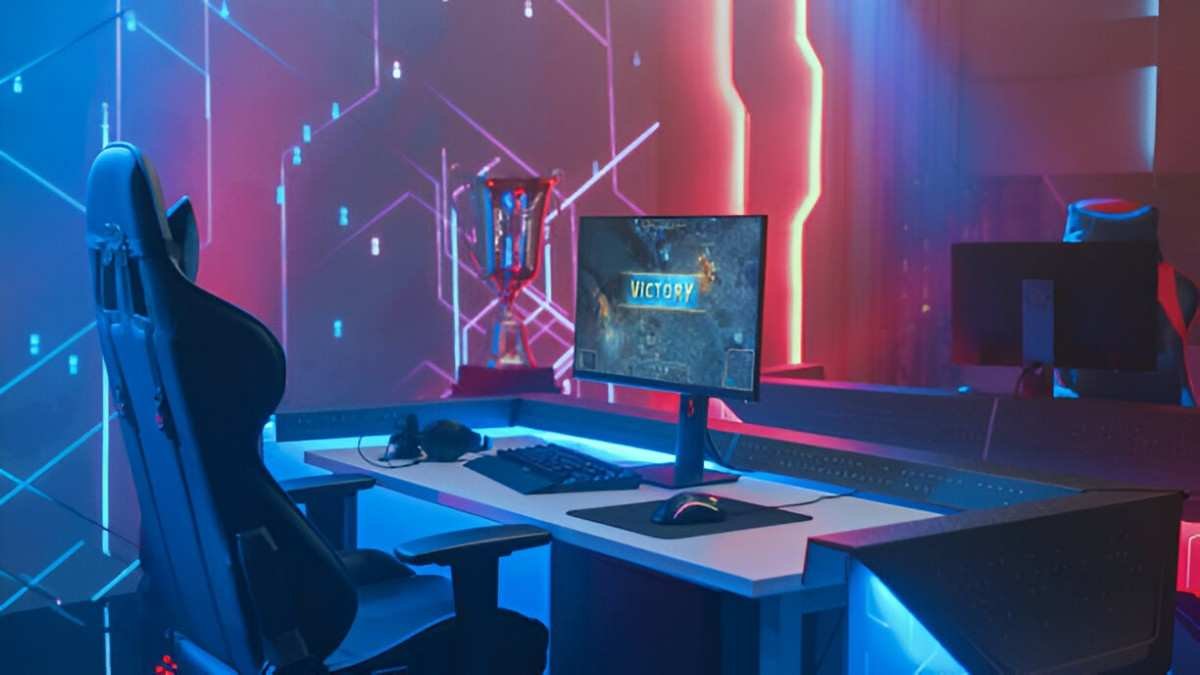When I decided to upgrade my gaming setup, one of the first things I focused on was finding the perfect gaming desk. The desk you choose plays a vital role in enhancing your gaming experience, as well as providing comfort and stability for long gaming sessions. It was not an easy task, so I decided to dive deep into understanding what makes a gaming desk stand out. In this guide, I’ll walk you through everything you need to know about buying the best gaming desk for your needs.
Table of Contents
Understanding the Importance of a Gaming Desk
A gaming desk is not just any ordinary desk. While standard desks might be enough for office work, a gaming desk is designed to meet the unique needs of gamers. From supporting multiple monitors to providing ample space for gaming peripherals, the right gaming desk can improve both your gameplay and your posture.
During my search for the right desk, I realized that factors like size, build quality, ergonomics, and features made a significant difference. So, let me guide you step by step through what you should look for when choosing a gaming desk.
1. Size and Space Consideration
The first thing you should think about when choosing a gaming desk is the size. A desk that’s too small won’t fit all your gear, while one that’s too large might overwhelm your room.
What to Consider:
- Room Size: Before buying, measure the space where you plan to place your desk. I found it really useful to mark out the desk’s dimensions on the floor with tape. This helped me visualize how much space it would take up.
- Monitor Setup: How many monitors do you plan to use? If you’re using a single screen, a desk with a width of 40-50 inches might be sufficient. However, for a triple monitor setup, you’ll need a desk that’s at least 60 inches wide.
Desk Sizes:
| Desk Size | Ideal For |
|---|---|
| 40-50 inches | Single monitor setup, limited peripherals |
| 60 inches | Dual monitors, a few peripherals |
| 70+ inches | Triple monitors, multiple peripherals |
I chose a desk that was 60 inches wide, which gave me enough space for my dual monitors, keyboard, mouse, and speakers while leaving room for comfort.
2. Build Quality and Material
The build quality of the desk is essential. Gaming can get intense, and your desk should be durable enough to withstand this. From my experience, the material is a key factor that impacts both aesthetics and longevity.
Materials:
- Wood: A classic choice, wood gives a premium feel and is sturdy. However, it can be heavy.
- Metal: Offers excellent durability and a modern look. Metal desks often support more weight and are less prone to damage.
- MDF (Medium Density Fiberboard): A common alternative to solid wood. It’s relatively affordable but may not be as durable in the long run.
- Glass: Typically used for more modern designs, though it’s not as common for gaming desks due to the fragility.
I ended up with a metal-framed desk with a wood-like laminate top. It was sturdy, looked sleek, and was relatively easy to maintain.
3. Ergonomics and Comfort
When it comes to gaming, comfort is crucial. Long hours at the desk without proper ergonomic features can lead to discomfort, fatigue, and even health problems.
Key Ergonomic Features:
- Adjustable Height: Many gaming desks now come with adjustable height, allowing you to switch between sitting and standing. This feature can help you stay comfortable during longer gaming sessions.
- Cable Management: A desk with cable management features will keep your cords organized and out of sight. Trust me, you don’t want tangled cables messing up your gaming experience.
- Rounded Edges: I found that desks with rounded edges were much more comfortable on my arms during extended gaming sessions.
I chose a desk with a built-in cable management tray and adjustable height, which helped with both comfort and organization.
4. Weight Capacity
Weight capacity is an often overlooked factor, but it’s crucial. Gaming setups can be heavy, especially when you add multiple monitors, speakers, and other peripherals. I made sure to check the weight capacity of the desk before purchasing.
Weight Capacity Considerations:
| Desk Type | Weight Capacity |
|---|---|
| Standard Gaming Desk | 100-200 lbs |
| Heavy-duty Gaming Desk | 200+ lbs |
For my setup, a desk with a weight capacity of around 200 lbs was more than enough to handle my gear.
5. Design and Aesthetics
The design of the gaming desk should align with your personal style and fit the overall look of your gaming space. For me, the aesthetics were an essential part of the decision-making process.
Gaming desks come in various styles, from minimalistic designs to bold, futuristic ones. You can even find desks with built-in LED lighting, which can add to the overall ambiance of your gaming space.
I personally liked the clean look of a modern desk with a black matte finish and subtle LED lighting around the edges. It matched my room’s decor and created a great gaming atmosphere.
6. Extra Features
Depending on your gaming needs, there are several additional features you might want to consider.
- Built-in Speakers: Some gaming desks come with built-in speakers, which can be a nice touch for those who want an all-in-one setup.
- Cup Holders and Headphone Hooks: These are great for keeping your drink and headphones within reach without cluttering your desk.
- Adjustable Feet: Adjustable feet can help level the desk if your floor is uneven, ensuring stability.
While I didn’t prioritize built-in speakers, I found a desk with a headphone hook and a cup holder, which turned out to be quite convenient.
7. Price Range
Gaming desks can range in price from budget-friendly options to high-end premium desks. It’s important to set a budget before shopping.
Price Breakdown:
| Desk Type | Price Range |
|---|---|
| Budget Gaming Desk | $100 – $200 |
| Mid-range Gaming Desk | $200 – $400 |
| Premium Gaming Desk | $400 and above |
I opted for a mid-range gaming desk because it offered a good balance between quality and affordability. It had the features I needed without breaking the bank.
8. Brand Reputation
While it’s not always the case, some brands specialize in creating top-quality gaming desks. I found that buying from well-known gaming furniture brands provided extra peace of mind regarding build quality and customer service.
Some of the trusted gaming desk brands include:
- Arozzi
- Atlantic
- DXRacer
- FlexiSpot
- Eureka Ergonomics
9. Assembly Process
While many gaming desks come pre-assembled, some require setup. I found that some desks with complex features can be tricky to assemble. If you’re not comfortable with assembling furniture, look for desks that offer easy assembly instructions or even pre-assembly services.
10. Where to Buy
I found a few different places to purchase my desk, including:
- Online Stores: Websites like Amazon, Walmart, and specialized gaming furniture retailers often offer a wide range of gaming desks with user reviews that can help you make an informed decision.
- Furniture Stores: Stores like IKEA and Staples sometimes carry gaming desks, though their selection might be more limited compared to online stores.
- Custom Desks: If you have a specific vision in mind, you could also opt for a custom-built gaming desk.
Conclusion
Choosing the best gaming desk is more than just picking the one with the coolest design. It’s about ensuring that your desk provides the functionality, comfort, and durability needed for your gaming sessions. After weighing all the factors—size, build quality, ergonomics, and price—I found a desk that suited my needs perfectly.
I hope this guide helps you make an informed decision when shopping for your next gaming desk. It’s not just about aesthetics or features—it’s about finding a balance that fits your gaming style and provides you with the comfort and space you need to perform your best. Happy gaming!





